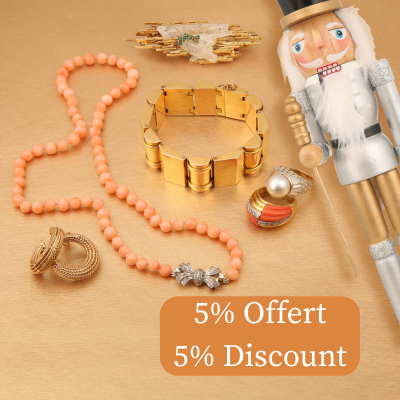The Diamond : Everything you ever wanted to know about the diamond …

The origin of natural diamonds is a geological epic that unfolds over millions of years deep within the Earth's crust. These precious gems are the result of a unique crystallisation process, subjected to extreme pressures and temperatures. Let's explore together the fabulous journey that takes these natural wonders from the mines to the jewellers.
The journey of natural diamonds from mine to jeweller

Diamonds formed deep underground
The formation of diamonds begins more than 200 km underground in the Earth's mantle. There, under colossal pressure and temperatures of over 1000°C, atoms of pure carbon slowly crystallise to form this extraordinary mineral.
Rising to the surface through kimberlite pipes
To reach us, diamonds travel up veritable geological lifts: kimberlite pipes. These deep volcanic formations propel magma and the diamonds it contains to the surface during eruptions.
Mining
Once brought to the surface by magmatic transport, rough diamonds are extracted from volcanic rock in various types of mines around the world:
- Open pit mines, when deposits are near the surface
- Underground mines for deeper deposits
- Alluvial mining
From mine to cutting
After extraction, the rough diamonds are sent to the cutting workshops. Here, these crystals are transformed into sparkling gems by highly skilled craftsmen. The process includes sawing, cleaving, cutting and finally polishing to bring out the full brilliance of the stones. Each step is carried out with extreme precision to optimise the beauty and value of the final diamond.
The role of diamonds in cultures and traditions around the world

Symbols of love and commitment
In many cultures, diamonds are associated with everlasting love and commitment. Its exceptional hardness makes it the perfect symbol to seal a union and represent the strength of the bonds of marriage.
Signs of prestige and power
Throughout history, kings and queens have adorned their crowns and jewels with diamonds to assert their power and wealth. These rare stones were attributes of the aristocracy, reflecting high social status.
Amulets and talismans
In some traditions, diamonds are believed to have protective and healing properties. Worn as amulets, they were believed to ward off bad luck and bring courage and purity to their wearers.
Natural diamonds versus synthetic diamonds: what are the differences ?

The creation process
Unlike natural diamonds, which are formed in the bowels of the earth, synthetic diamonds are created in laboratories. There are two main techniques: HPHT (High Pressure High Temperature), which mimics the natural conditions in which diamonds are formed, and CVD (Chemical Vapour Deposition), which grows the diamond from a substrate.
Physical and chemical properties
Whether natural or synthetic, diamonds share many of the same properties. However, there are subtle differences at the atomic level that can be detected by advanced analysis (traces of nitrogen, metallic inclusions, etc.).
Value and rarity
The rarity and millennia-old geological origins of natural diamonds make them far more valuable than their synthetic counterparts, which can be produced in large quantities. A natural diamond will always fetch a much higher price than its laboratory equivalent of the same size.
Diamond quality criteria: what to know before you buy
To judge the quality of a diamond and estimate its value, professionals rely on the famous '4 Cs'.
Carat - the weight
The carat is the unit of measurement for the weight of a diamond. 1 carat equals 0.20 grams. The heavier the diamond, the more valuable it is. But weight is not everything!
Colour

Diamonds come in a wide range of colours, from exceptional white to intense yellow and all shades in between. For white diamonds, the absence of colour is desirable. A stone graded D is considered the most beautiful and is valued accordingly.
Clarity
The clarity of a diamond is measured by the number and size of inclusions and imperfections it contains. A stone is said to be 'loupe clean' when no flaw is visible to the naked eye. This is the highest and rarest level of clarity.
Cut
The cut does not refer to the size of the diamond, but to the quality of the cut, polish and proportions. The brilliance and fire of a stone depends on this. A good cut allows light to pass through in the best possible way.
Pour plus d’informations sur les diamants vous pouvez consulter le site Natural Diamonds.
Assessing the price of a genuine diamond
The Certificate of Authenticity
The 4 Cs are the stone's 'identity card' and can be found on a certificate issued following an assessment by a gemmological laboratory. There are many gemmological laboratories in the world, but not all have the same reputation. The most important international laboratories, considered to be the most serious, are:
- GIA – Gemological Institute of America ;

GIA’s certificate sample
- HRD – Hoge Raad voor Diamant (« Superior Diamond Council ») ;

HRD’s certificate sample
- LFG – Laboratoire Français de Gemmologie.

LFG’s certificate sample
There is a cost to producing a certificate and it is not necessary for all stones. Generally, gemstones under 1 carat do not come with a certificate. However, the certificate gives a guarantee to the potential buyer of a stone. Beautiful stones are therefore generally certified.
The price of a one carat diamond
For an engagement ring, one carat is the average diamond size used. There is no fixed price for a one-carat diamond and it can vary from €2,000 to €25,000. The weight of the diamond is not the only determining factor; the purity of the stone, its colour and the shape of the cut must also be taken into account. This explains the huge difference in price. To give you a general idea, a good quality diamond for an engagement ring costs around €6,000.
Of course, this is an average price and again the value of a diamond varies greatly as it is subject to many precise criteria. To make you dream (or cry), you should know that the most expensive diamonds in the world, such as the Hope or the Cullinan, are worth several hundred million euros.
The environmental impact of natural diamond mining
The mining of natural diamonds can have significant environmental costs. The opening of vast open-pit mines, the dumping of tailings, the consumption of water and fossil fuels... the damage to ecosystems is not negligible.
Fortunately, progress has been made in recent years and awareness is growing among the sector's players. New, more respectful practices are emerging, such as optimising water use, rehabilitating sites after mining and switching to renewable energy. Much remains to be done, but the road to a more sustainable diamond seems to be mapped out.
The origin of natural diamonds: all you need to know
The odyssey of natural diamonds is a fabulous journey from the heart of our planet to our jewellery boxes. The creation of these extraordinary stones combines the immensity of geological time and the extreme conditions of the Earth's depths.
Admired and coveted by mankind for thousands of years, diamonds will continue to dazzle us with their unparalleled brilliance and sparkling beauty. The next time you look at a stone on its bezel, think of the incredible story that brought it into being.
If you are interested in diamond’s jewels, don’t hesitate to discover what les Pierres de Julie have to offer in the store…
We are also available for any free expertise of your diamond jewelry, for that you can send an email with your photos to contact@lespierresdejulie.com.
Whether you're interested in buying a piece of jewellery or a stone, a free jewelry appraisal or jewelry resale, Pierres de Julie welcomes you to its Parisian boutique in the Village Suisse, a stone's throw from the Ecole Militaire and the Esplanade des Invalides.
Nouveautés
- 2.900 €
- 2.900 €
- Unit price
- / per
- 12.800 €
- 12.800 €
- Unit price
- / per
- 1.650 €
- 1.650 €
- Unit price
- / per
- 5.800 €
- 5.800 €
- Unit price
- / per











